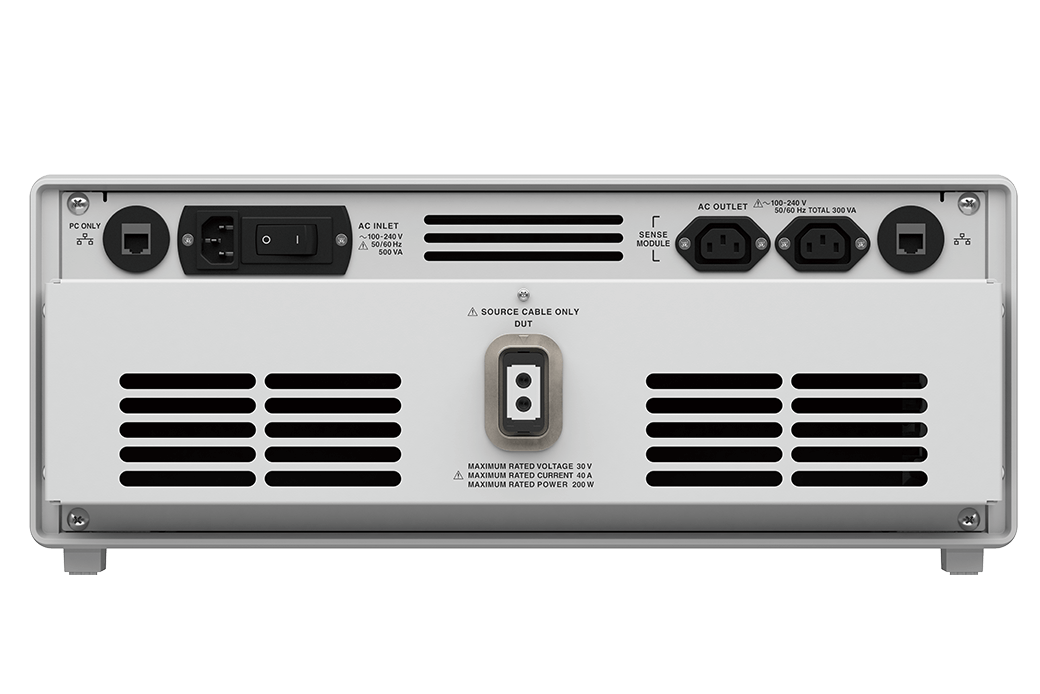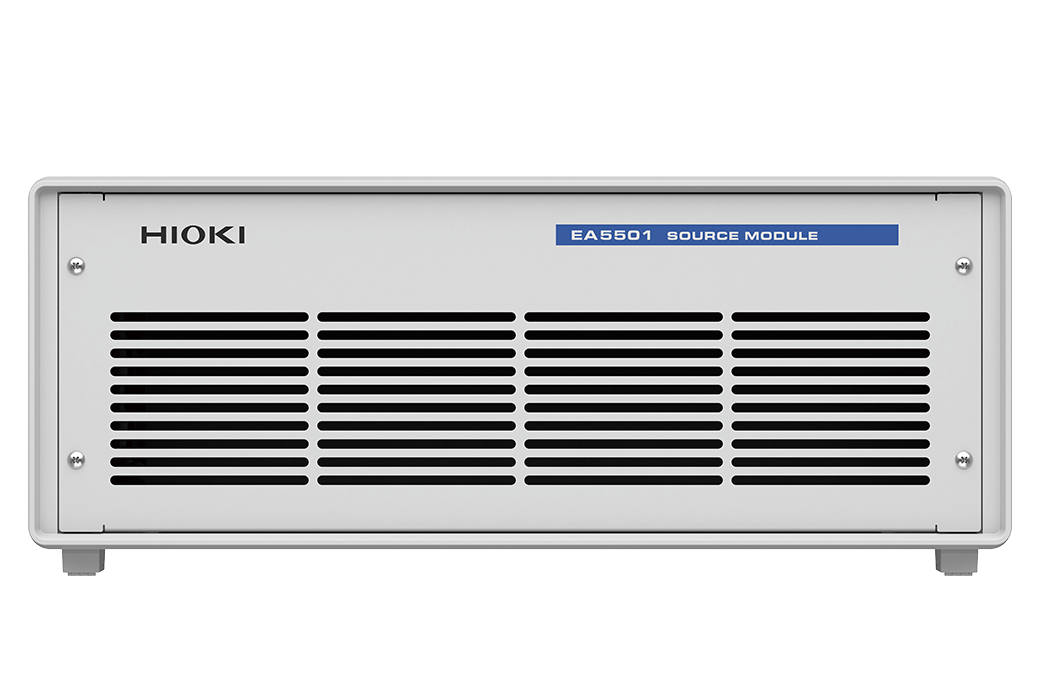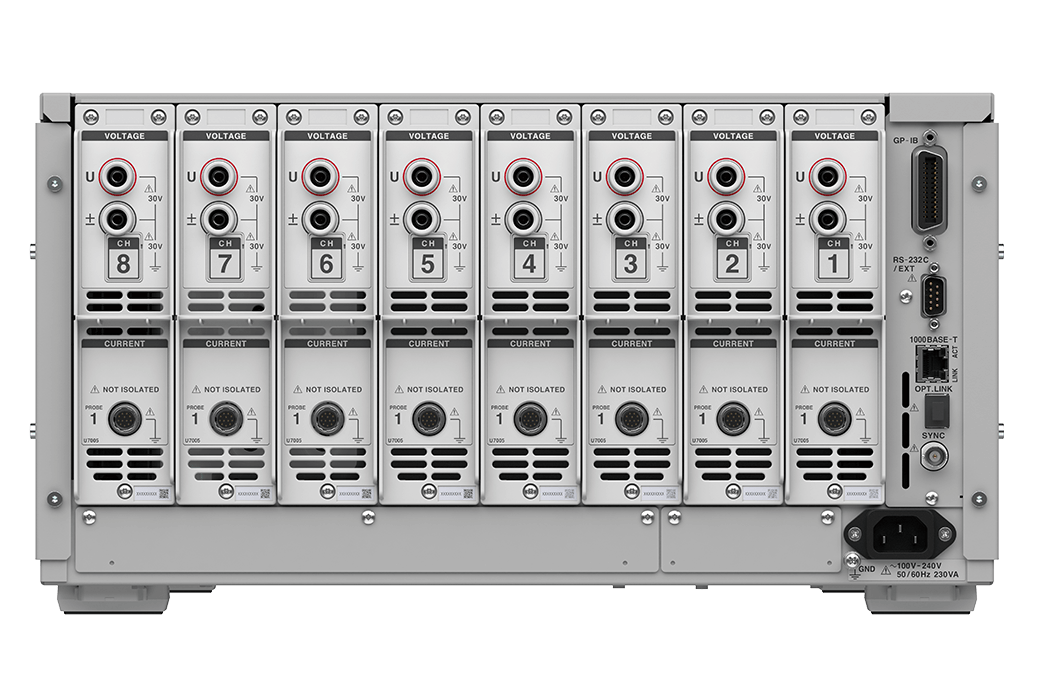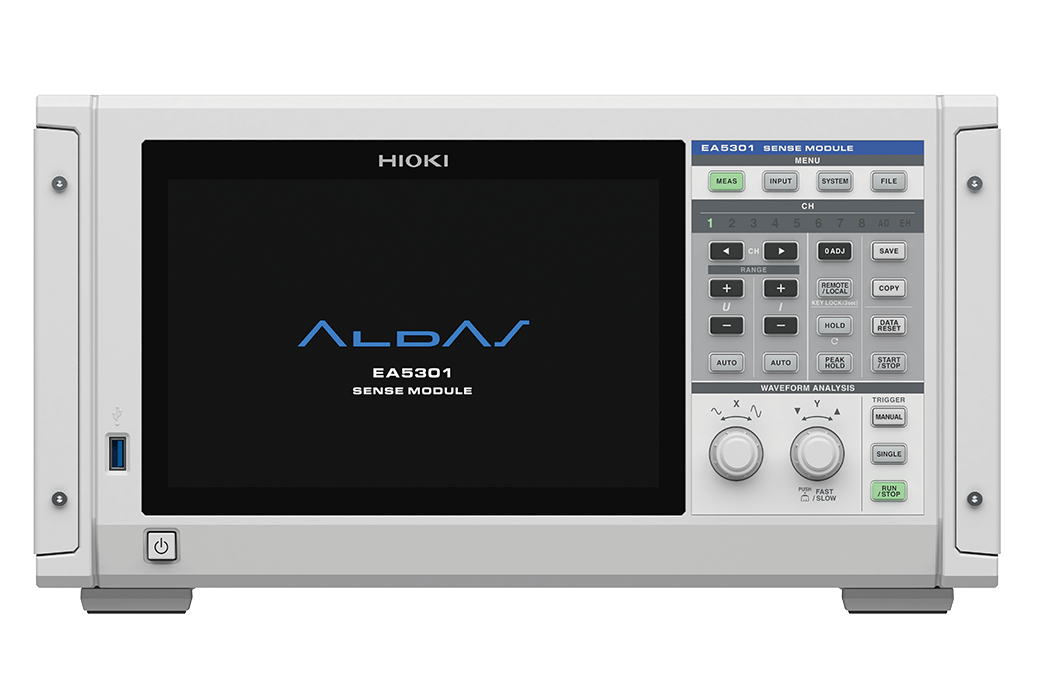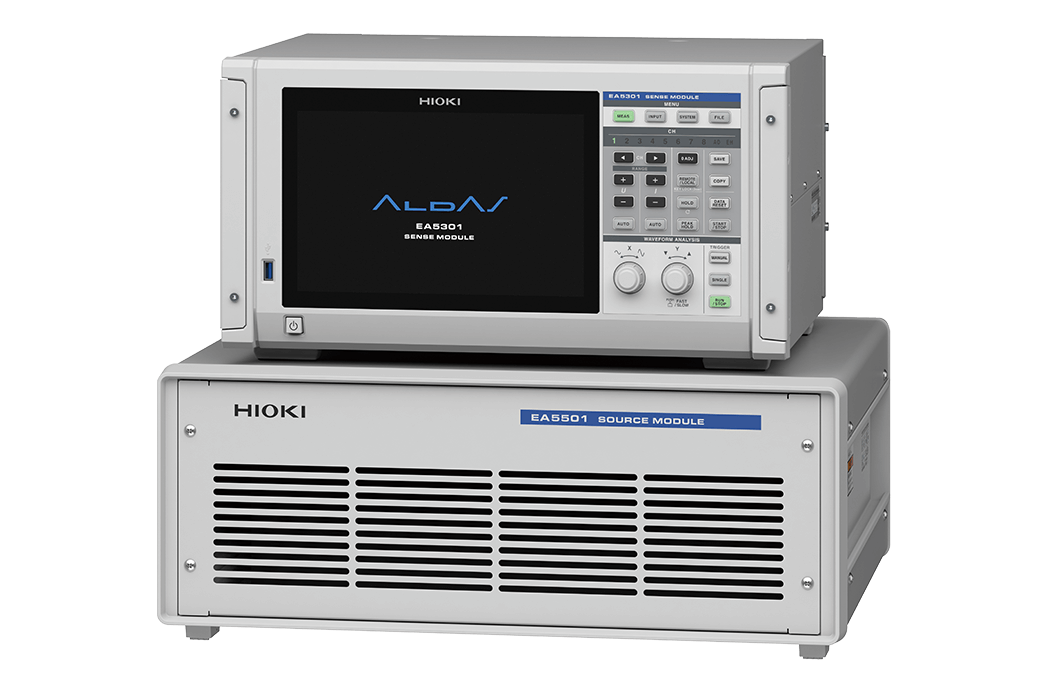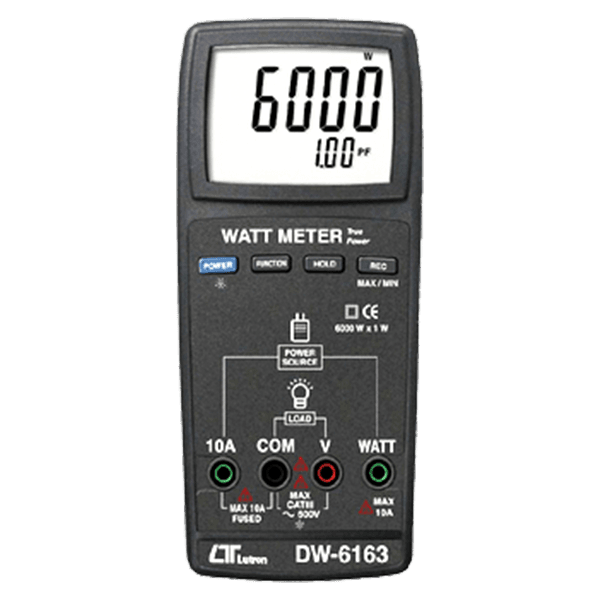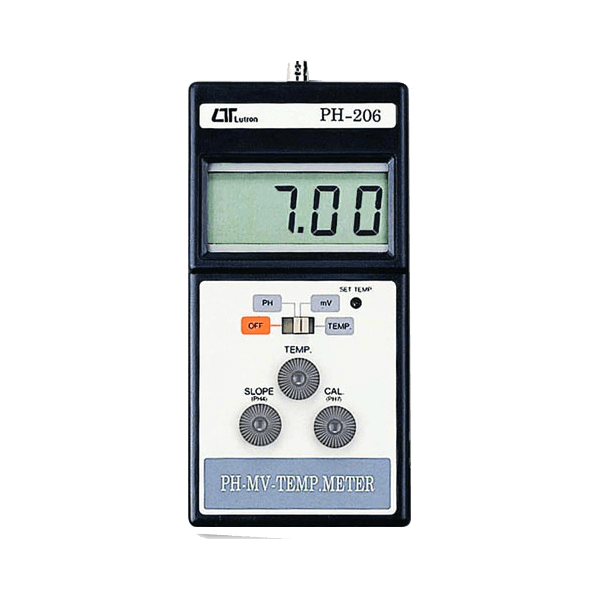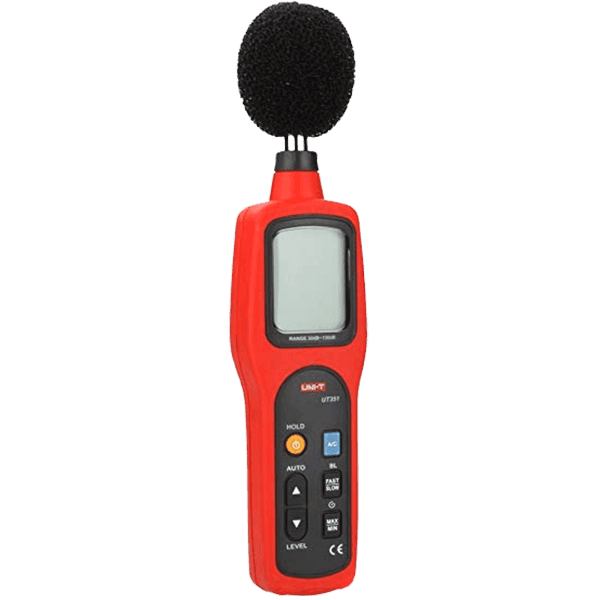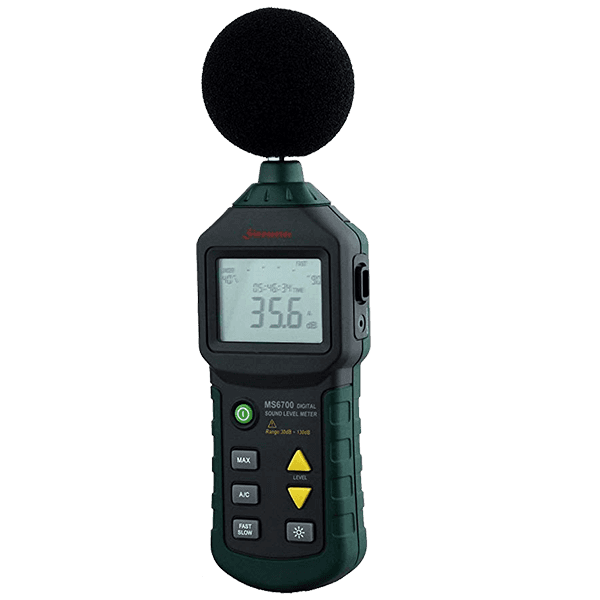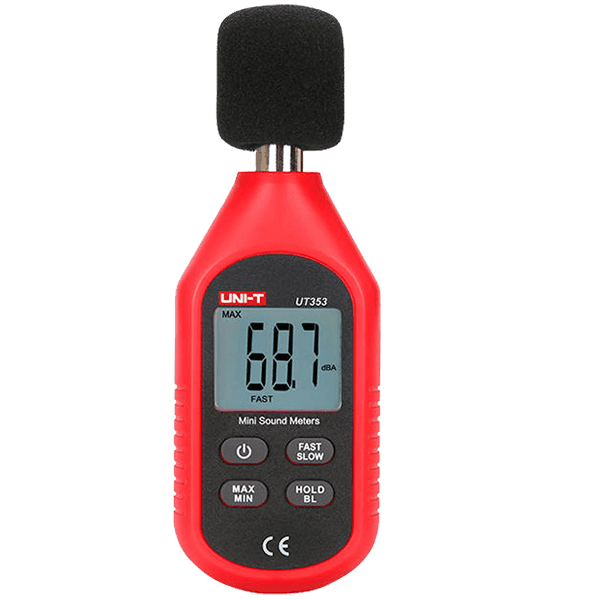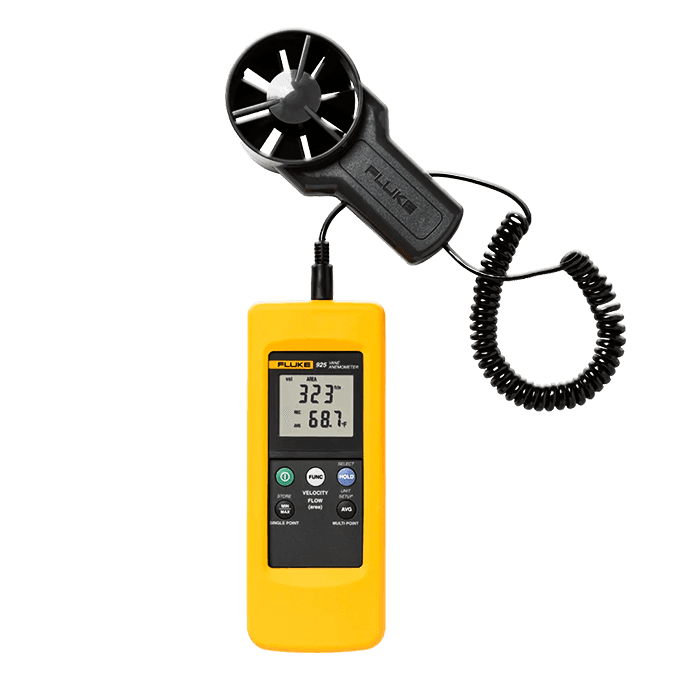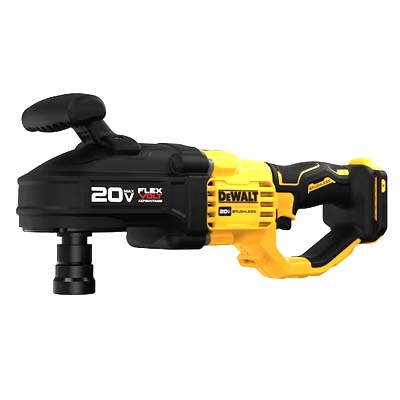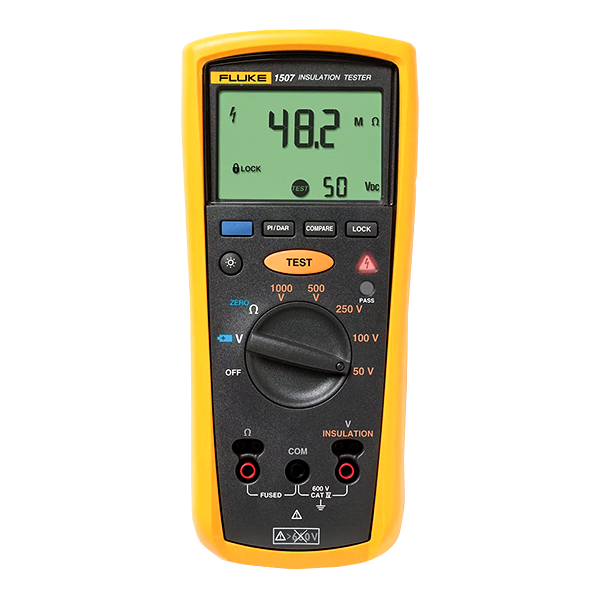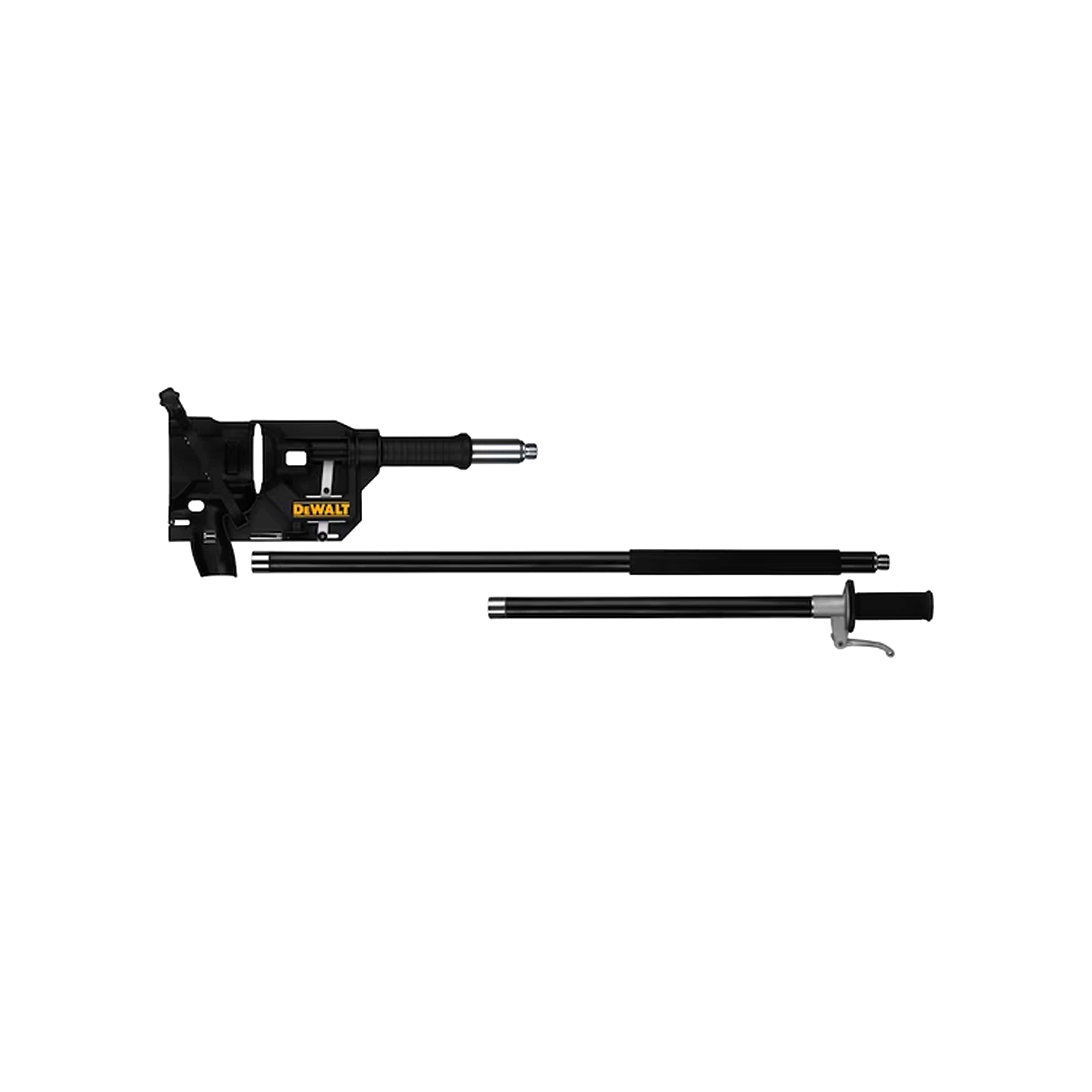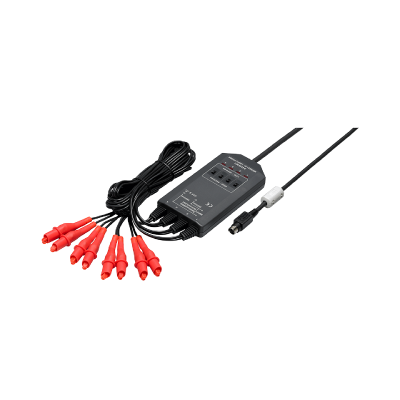Accelerate electrolysis cell development via high-current operational testing
Revolutionizing EIS measurement: Solutions for electrolysis cells and stacks with the ALDAS-Mini
EIS (Electrochemical Impedance Spectroscopy) measurement of electrolysis cells used to face challenges in measuring large cells or cell stacks with high currents. The ALDAS-Mini addresses this issue by enabling EIS measurement for a wide range of cell sizes, from small cells with electrolysis currents of a few amperes to large cells with currents of up to 500 A (*1).
Additionally, the system can measure up to 8 cells simultaneously within a cell stack, allowing for comparative analysis of the state of each cell during electrolysis.
Main Applications
• Evaluation of large cells exceeding 100 cm²
• Optimization of hydrogen production
• Monitoring cell health and diagnosing degradation factors
• Material research
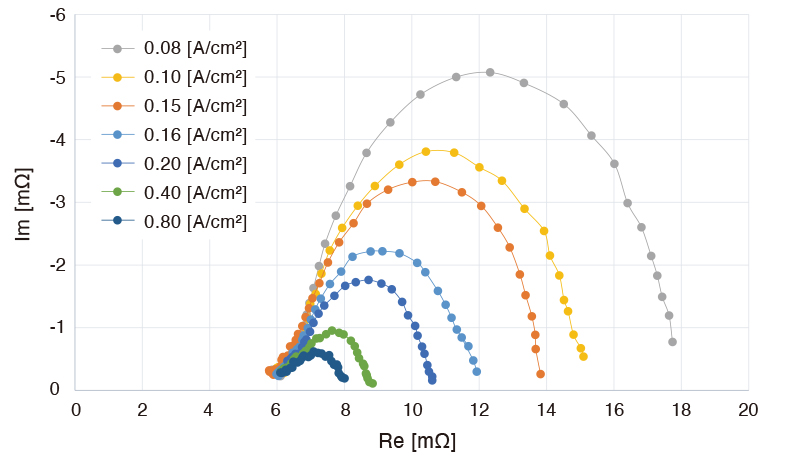
- *1:If your electrolysis current measurement requirements exceed 500 A, please contact your Hioki representative.
Just simply connect to your existing system
Designed for seamless setup, requiring no modifications to existing systems
No modification to your electrolysis system is needed to set up the ALDAS-Mini.
Unlike conventional booster-equipped FRA (Frequency Response Analyzer) devices, the ALDAS-Mini operates seamlessly alongside the cells' DC power supplies.
STEP 1: Applied current connection
Connect the SOURCE module to the cell’s power source terminal with the SOURCE Cable.
The SOURCE module applies AC current for measurement.
STEP 2: Measurement line connection
Attach the current sensor to measure the current. Then, connect the SENSE cable to the cell to measure the voltage (both connected to the SENSE module).
STEP 3: Start measurement
Start the measurement after configuring the necessary settings in the dedicated PC software.
The I-V curve and Nyquist plot are displayed simultaneously in real-time, with impedance calculated from the measured current and voltage.
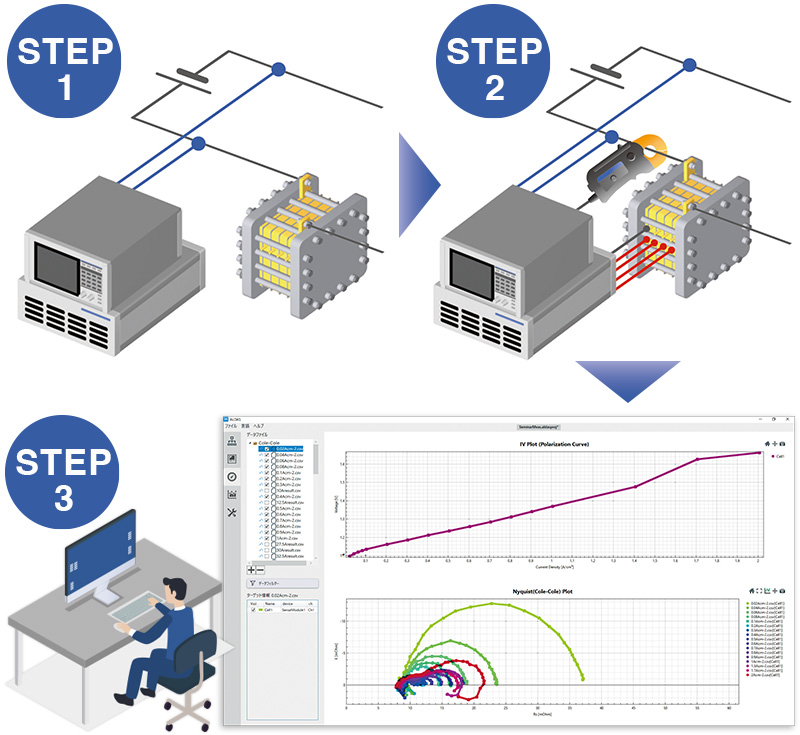
 Calibration
Calibration
 HVAC/Clean Rooms
HVAC/Clean Rooms
 Electrical
Electrical
Temperature
 Power & Energy
Power & Energy
 Mechanical & Maintenance
Mechanical & Maintenance
 Pharma, Health & Biomedical
Pharma, Health & Biomedical
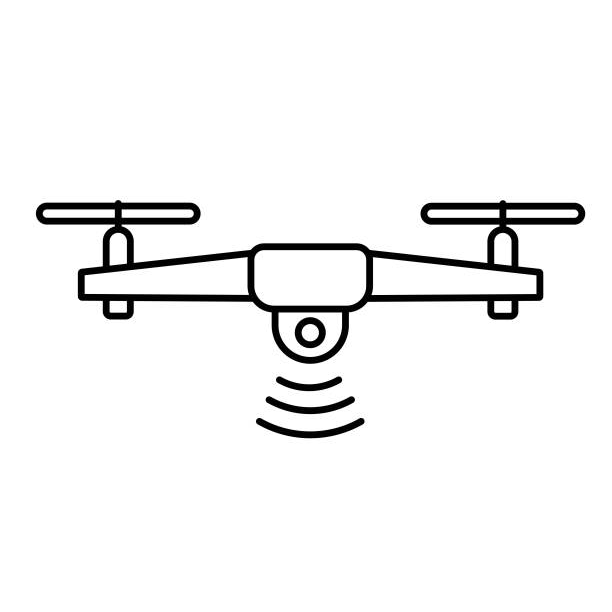 Drone Solution
Drone Solution
 Networking
Networking
 Transformer & Relay Testing
Transformer & Relay Testing
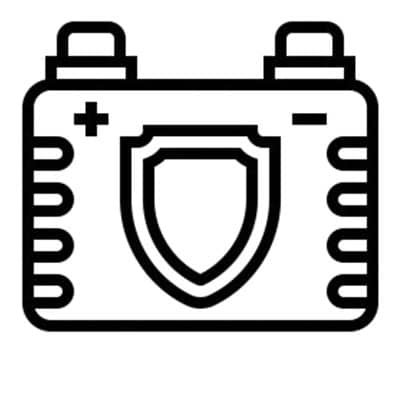 Insulation, Resistance and Battery
Insulation, Resistance and Battery
 Fault Testing & Diagnostics
Fault Testing & Diagnostics
 Lightning Protection Solution
Lightning Protection Solution
 Education, Research & Development
Education, Research & Development
 Civil Equipment
Civil Equipment
 Renewable Energy
Renewable Energy
 Cleaning and supplies
Cleaning and supplies
 Power Tools
Power Tools
 Safety Tools
Safety Tools
 Hardwares
Hardwares
 Construction Supply
Construction Supply
 Stationeries
Stationeries
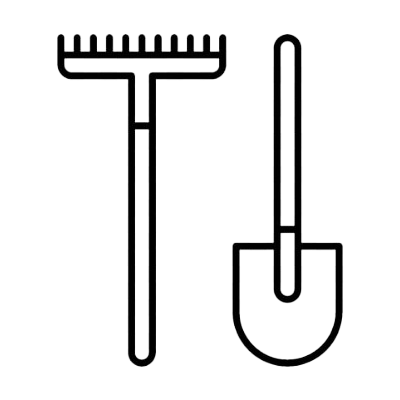 Garden Tools
Garden Tools
 Accessories
Accessories
 Machines
Machines
 Hand Tools
Hand Tools






































